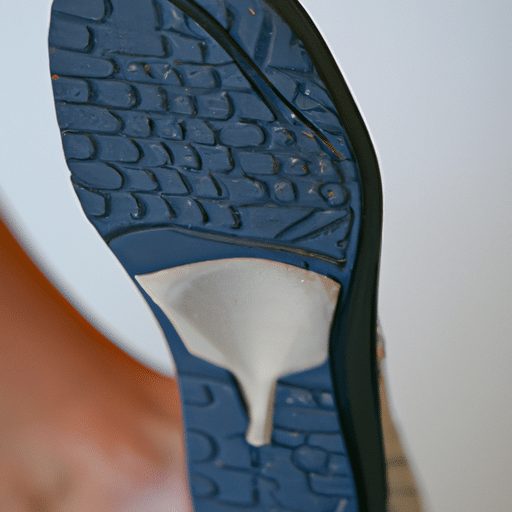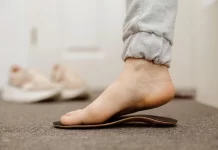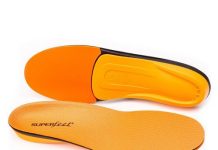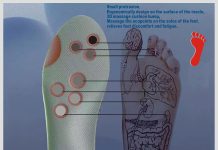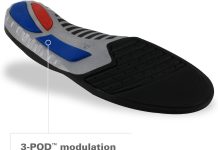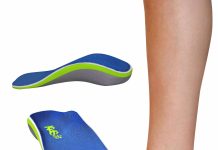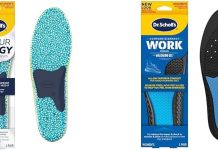Have you ever wondered what exactly orthotic insoles are and how they differ from regular insoles? Well, wonder no more! In this article, we will explore the world of orthotic insoles and reveal the key differences between these specialized foot supports and their regular counterparts. Whether you’re dealing with foot pain or simply seeking better comfort and support, understanding the unique benefits of orthotic insoles can make a world of difference for your feet. So, let’s dive in and discover what sets orthotic insoles apart from the rest!
Definition of Orthotic Insoles
What are orthotic insoles?
Orthotic insoles, also known as orthotics or shoe inserts, are specialized devices that are designed to provide support and alignment to the feet. These inserts are placed inside the shoes and are intended to address various foot conditions and improve overall comfort and function.
What do orthotic insoles do?
Orthotic insoles serve several purposes. They aim to correct any biomechanical imbalances in the feet, improve foot alignment, provide shock absorption and cushioning, and enhance stability and balance. These benefits can help alleviate foot pain, prevent injuries, and optimize foot function.
How do orthotic insoles work?
Orthotic insoles work by providing additional support to the feet and redistributing pressure evenly across the foot. They can help correct issues such as overpronation (inward rolling of the foot), supination (outward rolling of the foot), and high arches. By promoting proper foot alignment, these insoles can reduce strain on the feet, ankles, knees, and other parts of the body.
Types of orthotic insoles
There are various types of orthotic insoles available, catering to different foot conditions and needs. Some common types include rigid orthotics, which provide maximum support and control for severe foot conditions, and soft orthotics, which offer cushioning and shock absorption for individuals with sensitive feet. There are also accommodative orthotics, designed to provide comfort and relieve pressure on specific areas of the feet, and functional orthotics, which focus on correcting structural issues.
Differences Between Orthotic Insoles and Regular Insoles
What are regular insoles?
Regular insoles, also known as cushioned insoles or shoe inserts, are generally designed to provide additional cushioning and comfort to the feet. They are often made of soft materials and are not specifically tailored to address foot conditions or provide corrective support.
What do regular insoles do?
Regular insoles primarily aim to enhance the comfort of the shoes by adding an extra layer of cushioning. They can provide some shock absorption and improve overall foot comfort during activities. Regular insoles are commonly used to replace worn-out shoe inserts or to customize the fit of shoes.
How do regular insoles work?
Regular insoles work by providing an additional layer of padding inside the shoe, which can help absorb impact and reduce pressure on the feet. They are typically made of foam or gel materials that offer cushioning and comfort during walking or standing.
Key differences between orthotic and regular insoles
The main difference between orthotic and regular insoles lies in their purpose and design. While regular insoles primarily focus on providing cushioning, orthotic insoles offer corrective support and address specific foot conditions. Orthotic insoles are often custom-made or tailored to individual needs, while regular insoles are more readily available off-the-shelf. Additionally, orthotic insoles tend to be more rigid and structured, while regular insoles are made of softer materials for comfort.
Benefits of Using Orthotic Insoles
Improved foot alignment
Orthotic insoles are designed to correct biomechanical issues in the feet, such as overpronation or high arches. By promoting proper foot alignment, these insoles can alleviate strain on the feet and improve overall posture and body alignment. This can help prevent aches, pains, and injuries in the feet, ankles, knees, and even the lower back.
Relief from foot pain
One of the key benefits of using orthotic insoles is the relief they can provide from foot pain. Whether caused by plantar fasciitis, flat feet, or other foot conditions, orthotic insoles can help distribute pressure evenly across the feet and reduce strain on sensitive areas. This can result in reduced foot pain and improved comfort, allowing individuals to go about their daily activities with less discomfort.
Enhanced shock absorption
Orthotic insoles offer superior shock absorption compared to regular insoles. The structured design and materials used in orthotic insoles help absorb and disperse the impact that occurs when walking or participating in physical activities. This can reduce the stress on the feet, ankles, and joints, minimizing the risk of injuries and providing a more comfortable walking or running experience.
Prevention of injuries
By promoting proper foot alignment and reducing excessive motion, orthotic insoles can help prevent injuries. These insoles can provide stability and support to the feet, reducing the risk of sprains, strains, and stress fractures. Additionally, orthotic insoles can help alleviate pressure points and redistribute weight evenly, reducing the likelihood of developing calluses, bunions, and other foot problems.
Increased stability and balance
Orthotic insoles can improve balance and stability by providing a firm and supportive base for the feet. This is particularly beneficial for individuals with balance issues or those who engage in physical activities that require agility and stability, such as sports and dance. The enhanced stability provided by orthotic insoles can help reduce the risk of falls and improve overall performance.
When to Consider Orthotic Insoles
Foot conditions that may benefit from orthotic insoles
Orthotic insoles can be beneficial for various foot conditions, including plantar fasciitis, flat feet, high arches, bunions, Morton’s neuroma, and Achilles tendonitis. These conditions can cause pain, discomfort, and limited mobility, and orthotic insoles can help alleviate these symptoms by providing support, alignment, and cushioning to the feet.
Chronic foot pain
If you experience persistent foot pain that affects your daily activities, it may be worth considering orthotic insoles. Whether the pain is caused by a specific foot condition or overuse, orthotic insoles can help relieve pressure on sensitive areas and provide cushioning and support.
Poor foot biomechanics
Individuals with imbalances or abnormalities in their foot biomechanics can benefit from orthotic insoles. Conditions such as overpronation or supination can cause strain on the feet, ankles, and other parts of the body. Orthotic insoles can help correct these imbalances and promote proper foot alignment.
Sports-related foot issues
Athletes or individuals who engage in sports or high-impact activities are prone to foot injuries and conditions. Orthotic insoles can provide the necessary support and cushioning to reduce the risk of injuries, enhance performance, and aid in the recovery from sports-related foot problems.
Recovery from foot surgery
After foot surgery, the feet may require extra support and protection during the healing process. Orthotic insoles can provide the necessary cushioning and stability to aid in recovery and promote proper healing. They can also help prevent excessive pressure on surgical sites and reduce the risk of complications.
Getting the Right Orthotic Insoles
Consulting with a healthcare professional
If you are considering orthotic insoles, it is recommended to consult with a healthcare professional, such as a podiatrist or orthopedic specialist. These professionals can assess your foot condition, biomechanics, and specific needs to determine the most suitable type of orthotic insoles for you.
Custom vs. off-the-shelf orthotic insoles
Orthotic insoles can be custom-made to fit your feet precisely, providing the highest level of support and corrective functions. Custom orthotic insoles are typically made based on a mold or scan of your feet, ensuring a personalized fit. However, off-the-shelf orthotic insoles are also available and can provide adequate support for milder foot conditions.
Choosing the right material
Orthotic insoles are commonly made of various materials, such as foam, gel, or rigid plastic. The choice of material depends on your specific foot condition, comfort preferences, and the level of support required. Foam insoles offer cushioning and shock absorption, gel insoles provide additional cushioning and comfort, while rigid plastic insoles offer maximum support and control.
Sizing and fitting considerations
Proper sizing and fitting of orthotic insoles are crucial for their functionality and effectiveness. It is essential to choose the correct size of insoles for your shoe size to ensure a proper fit and optimal support. Some orthotic insoles can be trimmed or adjusted to fit different shoe sizes or styles, while others are designed for specific shoe types.
Replacing orthotic insoles
Over time, orthotic insoles can wear out and lose their effectiveness. It is important to monitor the condition of your insoles and replace them as needed, typically every 6-12 months or when they show signs of wear and tear. Regularly assessing the condition of your orthotic insoles will ensure that you continue to receive the desired support and benefits.
Common Misconceptions About Orthotic Insoles
Only for people with existing foot problems
While orthotic insoles are commonly used to address foot conditions, they can also provide preventive benefits and improve overall foot comfort and functionality. Individuals without existing foot problems can still benefit from the support, alignment, and shock absorption provided by orthotic insoles.
All orthotic insoles are the same
Orthotic insoles are not one-size-fits-all. There are various types of orthotic insoles available, each designed to address specific foot conditions or provide different levels of support. The choice of orthotic insoles should be based on your individual needs and foot condition, ensuring that you receive the most effective support and comfort.
Orthotic insoles can fix all foot issues
While orthotic insoles can provide significant relief and support for many foot conditions, they may not completely fix all foot issues. In some cases, additional treatments or therapies may be required to fully address certain foot conditions. It is important to consult with a healthcare professional for a comprehensive evaluation and to explore all possible treatment options.
Orthotic insoles are uncomfortable
Some individuals may have concerns about the comfort of orthotic insoles, especially in the initial adjustment period. However, with proper sizing, fitting, and gradual break-in, orthotic insoles can provide excellent comfort and support. It is important to follow the recommended break-in period and consult with a healthcare professional if persistent discomfort occurs.
Orthotic insoles are not necessary for athletes
Athletes, in particular, can benefit greatly from using orthotic insoles. The additional support, stability, and shock absorption provided by orthotic insoles can enhance athletic performance, reduce the risk of injuries, and aid in the recovery from sports-related foot issues. Orthotic insoles can be especially beneficial for athletes who engage in high-impact activities or have specific foot biomechanical imbalances.
Tips for Using Orthotic Insoles
Gradually breaking in new orthotic insoles
When using new orthotic insoles, it is important to allow your feet time to adjust and gradually break them in. Start by wearing them for short periods, gradually increasing the duration over a few weeks. This will allow your feet to adapt to the new support and minimize any initial discomfort.
Proper hygiene and maintenance
Maintaining proper hygiene and care for your orthotic insoles is essential for their longevity and effectiveness. Regularly clean and dry the insoles to prevent odors and bacterial growth. Avoid exposing them to excessive heat or direct sunlight, as this can cause the materials to deteriorate faster.
Wearing orthotic insoles in appropriate footwear
Orthotic insoles are designed to fit inside appropriate footwear, such as athletic shoes, casual shoes, or work boots. Ensure that your shoes have enough room to accommodate the insoles without causing discomfort or altering the fit. Wearing orthotic insoles in the correct footwear will maximize their support and comfort.
Using insoles in both shoes
To maintain proper balance and alignment, it is important to use orthotic insoles in both shoes, even if only one foot is affected by a specific condition. This ensures that both feet receive equal support and reduces the risk of creating imbalances or altering your gait.
Monitoring any discomfort or worsening symptoms
While orthotic insoles are designed to provide support and alleviate foot pain, it is important to monitor any persistent discomfort or worsening symptoms. If you experience ongoing pain, discomfort, or other unusual symptoms, it is recommended to consult with a healthcare professional for further evaluation and possible adjustments to your orthotic insoles.
Cost Factors of Orthotic Insoles
Price range of orthotic insoles
The cost of orthotic insoles can vary depending on factors such as the type of material, customization, and complexity of the foot condition being addressed. Off-the-shelf orthotic insoles can range from $20 to $80, while custom orthotic insoles typically range from $200 to $600. The price range should be considered in conjunction with the potential long-term benefits and effectiveness of the insoles.
Insurance coverage for orthotic insoles
Some insurance plans may provide coverage for orthotic insoles, particularly if they are deemed medically necessary. It is advisable to check with your insurance provider regarding coverage details and requirements, such as the need for a prescription or supporting documentation from a healthcare professional.
Considerations for affordability
While the cost of orthotic insoles may initially seem high, it is important to consider the long-term benefits and potential cost savings. Orthotic insoles can help prevent or alleviate foot conditions, reducing the need for expensive treatments, medications, or surgeries in the future. Additionally, the durability and longevity of orthotic insoles can make them a cost-effective investment over time.
Long-term cost-effectiveness
Orthotic insoles, especially custom-made ones, are designed to be durable and long-lasting. While the upfront cost may be higher compared to regular insoles, orthotic insoles can provide extended support and functionality, often lasting for several years. The long-term cost-effectiveness should be considered when evaluating the value of orthotic insoles.
Alternatives to Orthotic Insoles
Foot exercises and stretching
Foot exercises and stretching routines can help improve foot strength, flexibility, and overall biomechanics. These exercises can be effective for mild foot conditions and can complement the use of orthotic insoles. A healthcare professional or physical therapist can provide guidance and recommend specific exercises for your individual needs.
Physical therapy
For individuals with more severe foot conditions or those requiring specialized rehabilitation, physical therapy can be an alternative or complementary treatment to orthotic insoles. Physical therapists can provide targeted exercises, manual therapies, and gait analysis to address underlying issues and promote optimal foot function.
Footwear modifications
In some cases, modifying footwear can be an effective alternative to orthotic insoles. This may involve using shoes with built-in arch support, cushioning, or stability features. Additionally, shoe modifications such as heel lifts or wedges can help address specific foot conditions. Consulting with a footwear specialist or podiatrist can provide guidance on the most appropriate modifications for your needs.
Over-the-counter cushioned insoles
While not tailored to specific foot conditions, over-the-counter cushioned insoles can provide added comfort and support for individuals with minor foot discomfort or fatigue. These insoles often provide additional cushioning and shock absorption and are readily available in drugstores or online. However, it is important to note that they may not provide the same level of corrective support as orthotic insoles.
Non-invasive treatments
For certain foot conditions, non-invasive treatments such as physical modalities (e.g., ultrasound or laser therapy), orthopedic taping, or bracing may be considered as alternatives to orthotic insoles. These treatments aim to address underlying issues or provide temporary relief. Consulting with a healthcare professional can help determine if these alternatives are suitable for your specific foot condition.
Conclusion
In summary, orthotic insoles are specialized devices designed to provide support, alignment, and comfort to the feet. They offer numerous benefits, including improved foot alignment, pain relief, enhanced shock absorption, injury prevention, and increased stability and balance. Orthotic insoles can be considered for various foot conditions, chronic foot pain, poor foot biomechanics, sports-related foot issues, and recovery from foot surgery. When choosing orthotic insoles, it is important to consult with a healthcare professional, consider custom options, choose the right material, ensure proper sizing and fitting, and regularly replace worn-out insoles. Additionally, it is important to address common misconceptions about orthotic insoles and follow the recommended tips for their use. While orthotic insoles can be cost-effective in the long run, there are alternative options to consider, including foot exercises, physical therapy, footwear modifications, over-the-counter cushioned insoles, and non-invasive treatments. Seeking professional advice and exploring various options will help individuals make informed decisions regarding their foot health and overall well-being.

